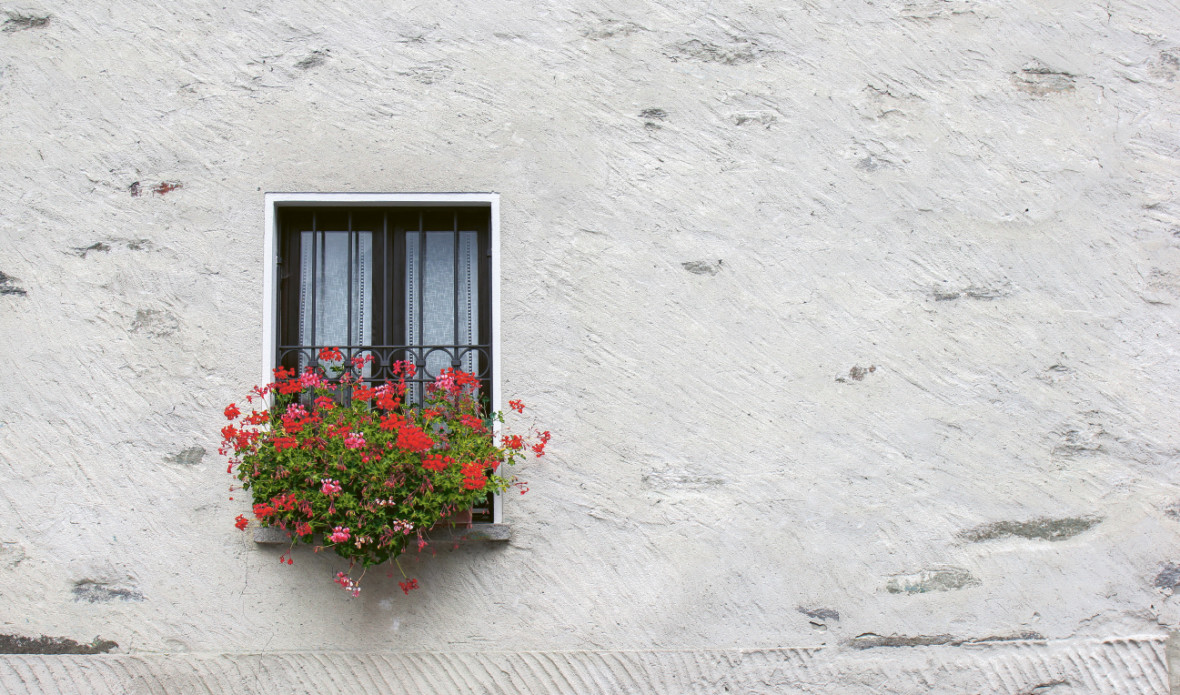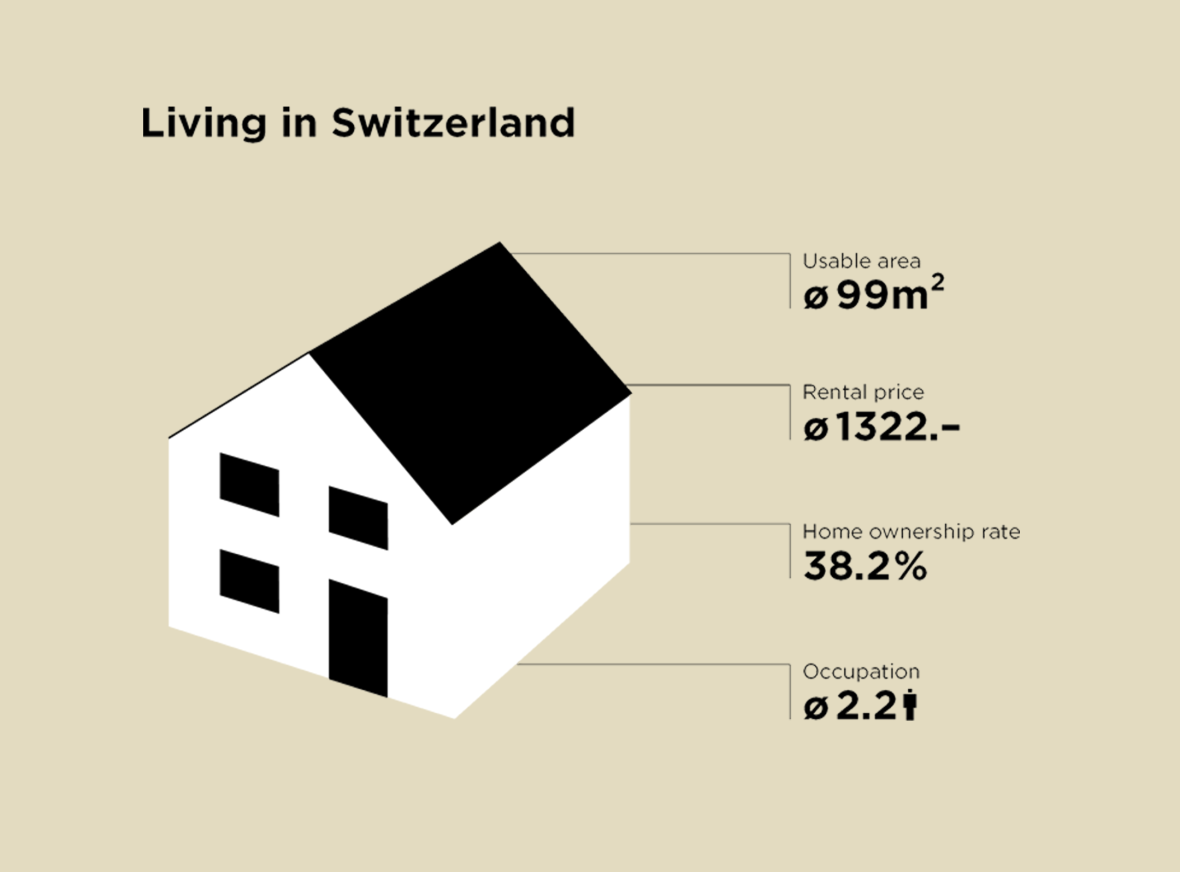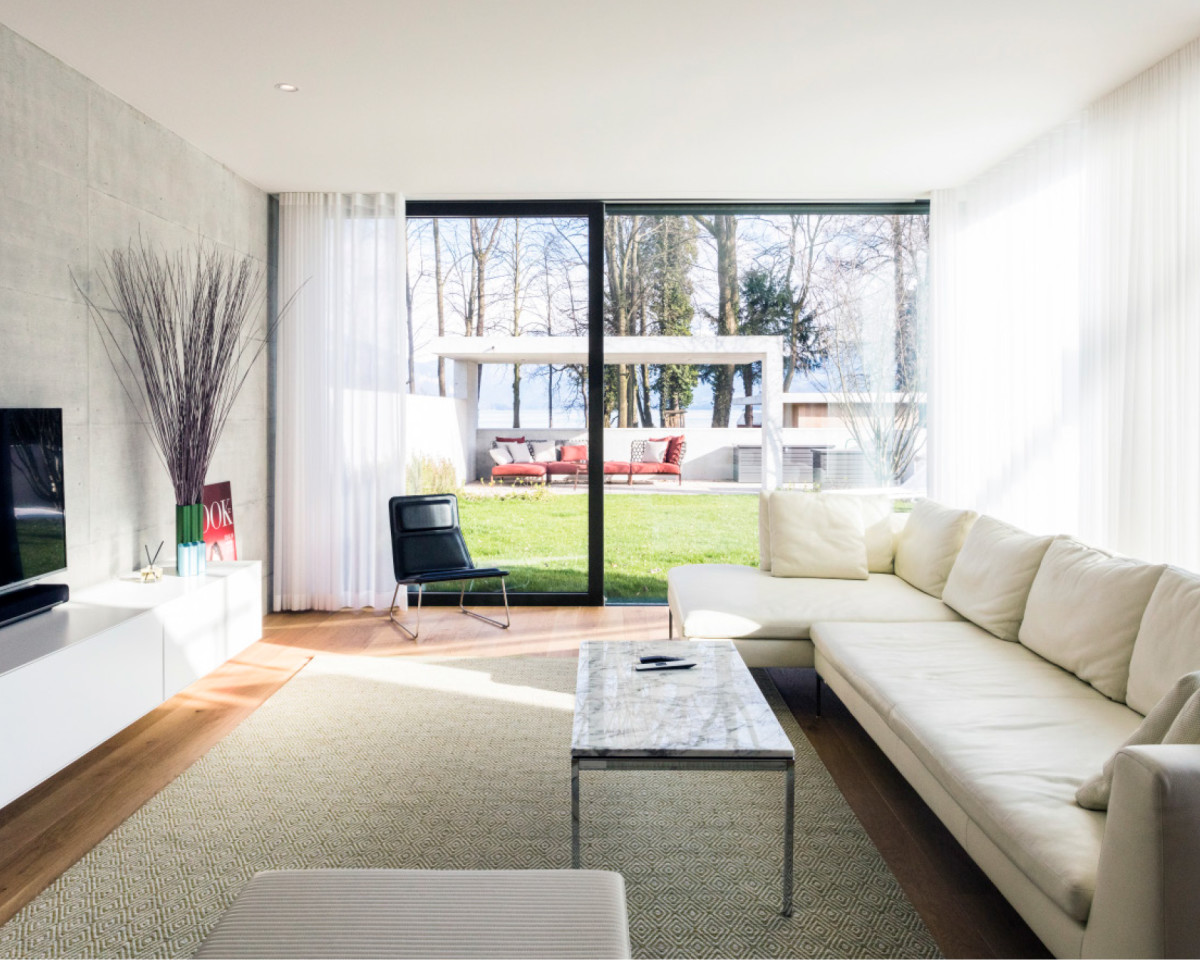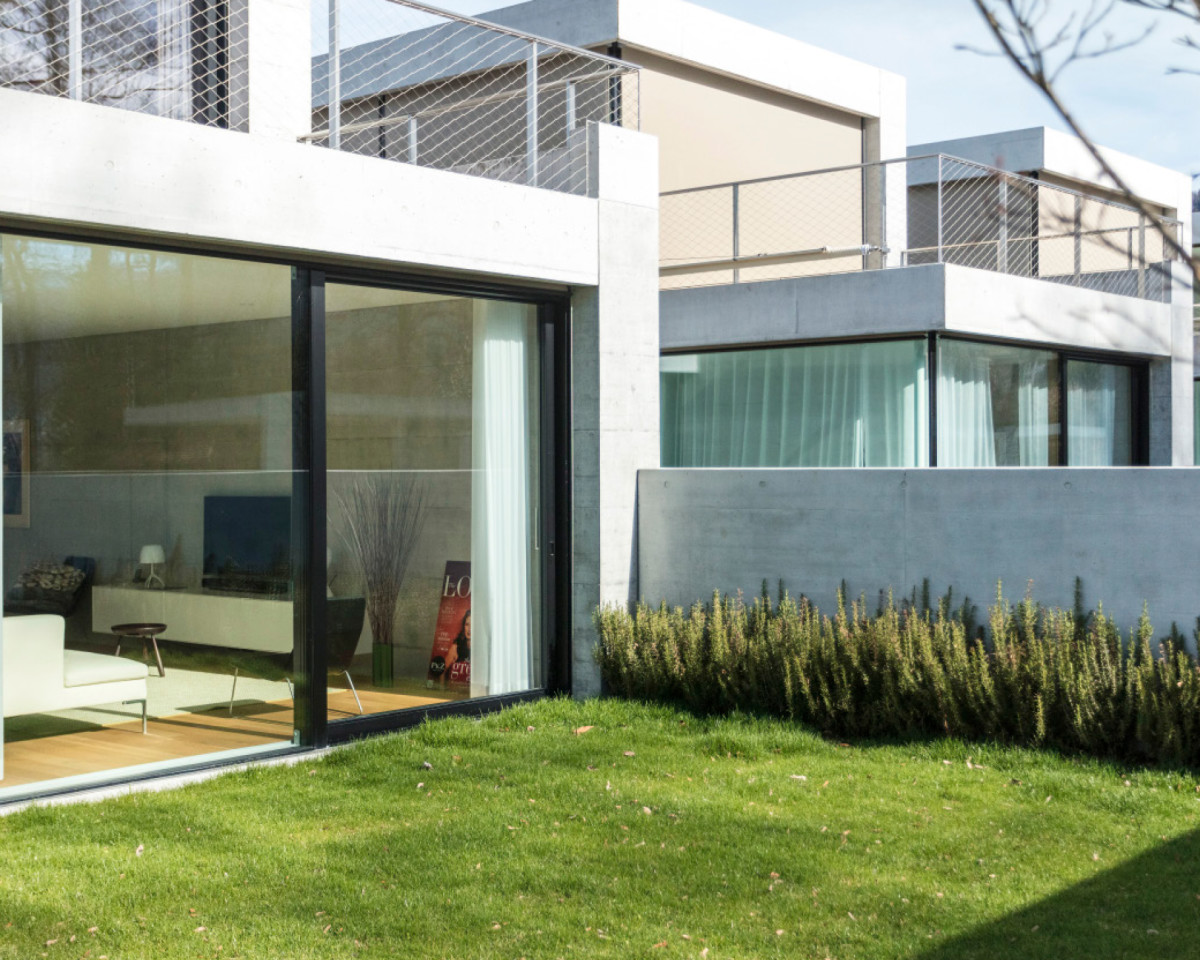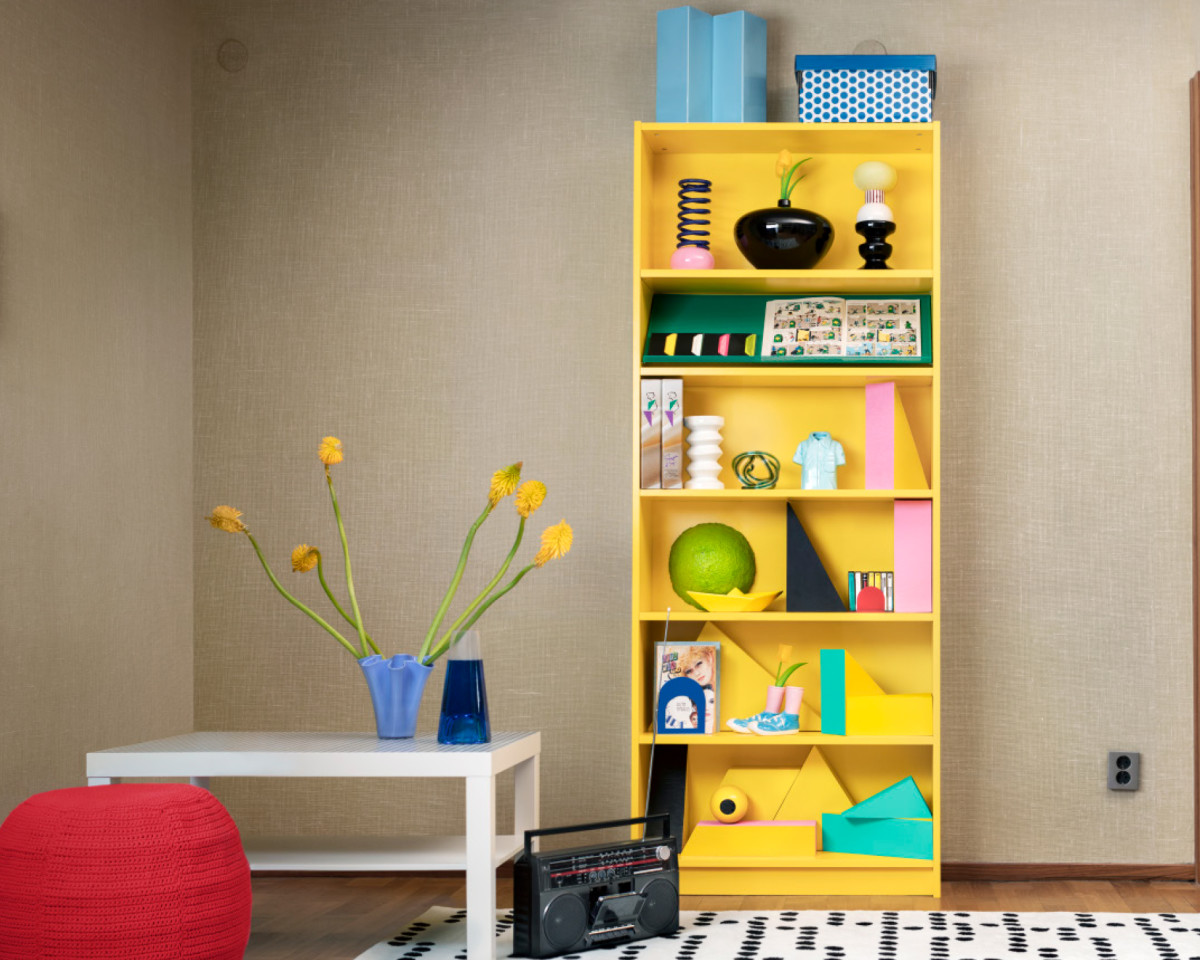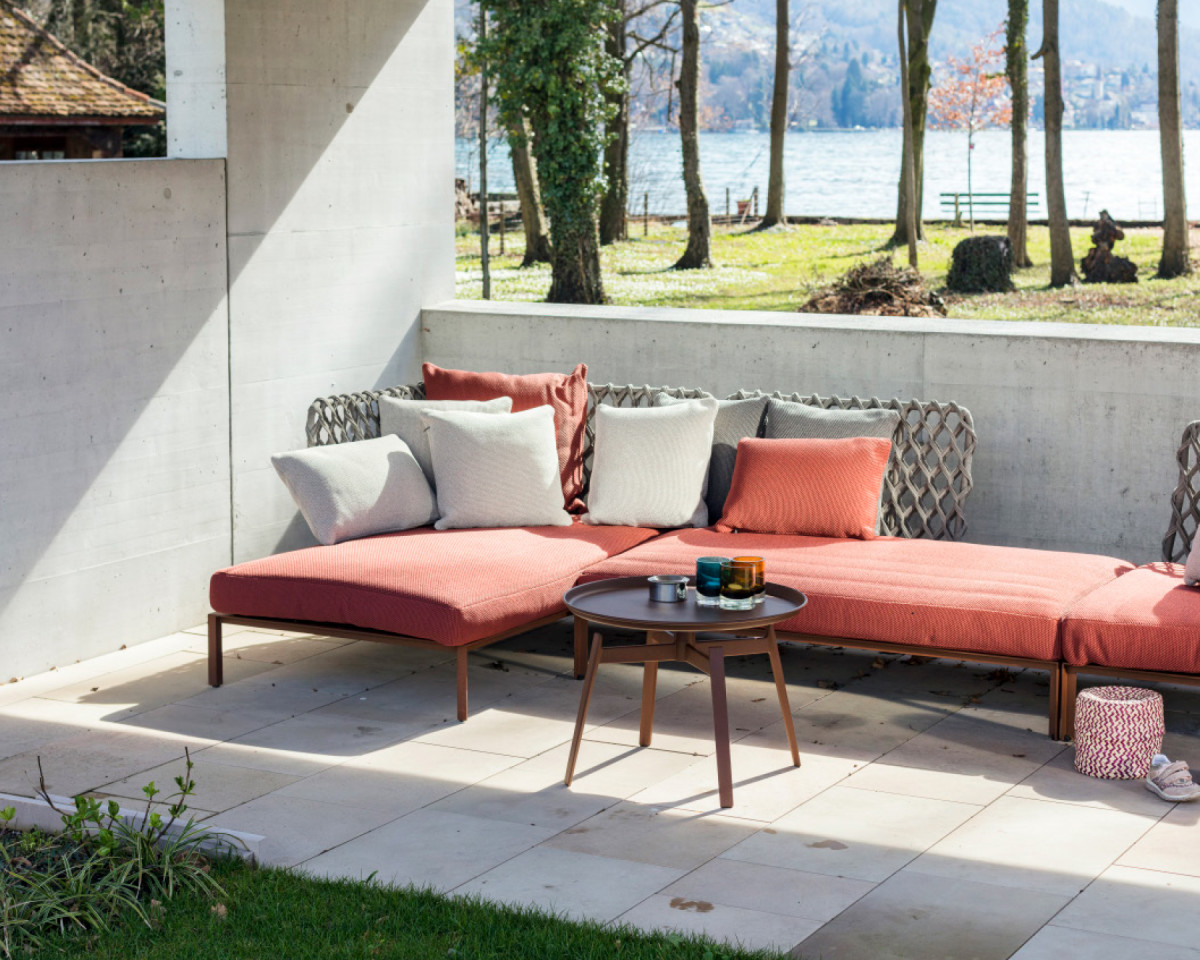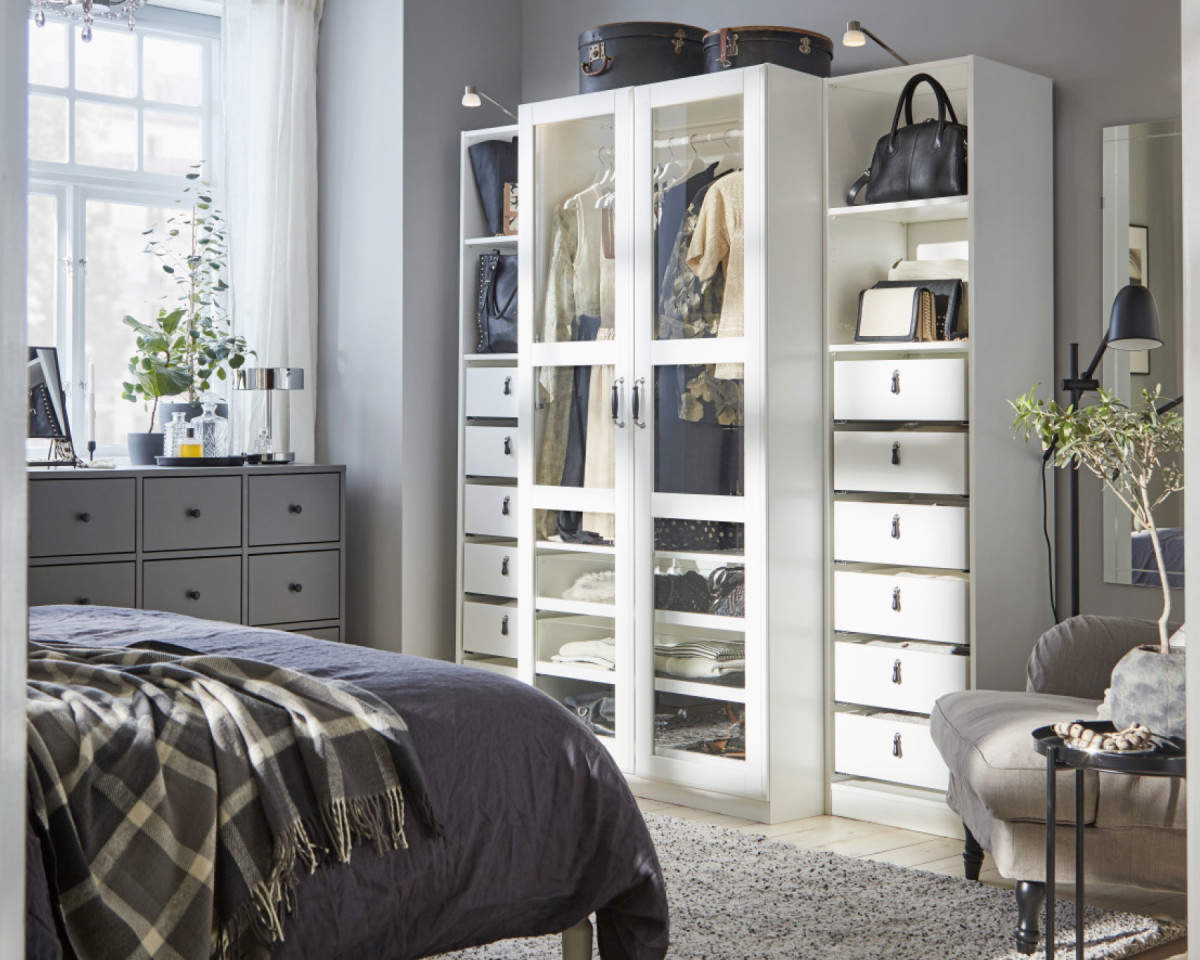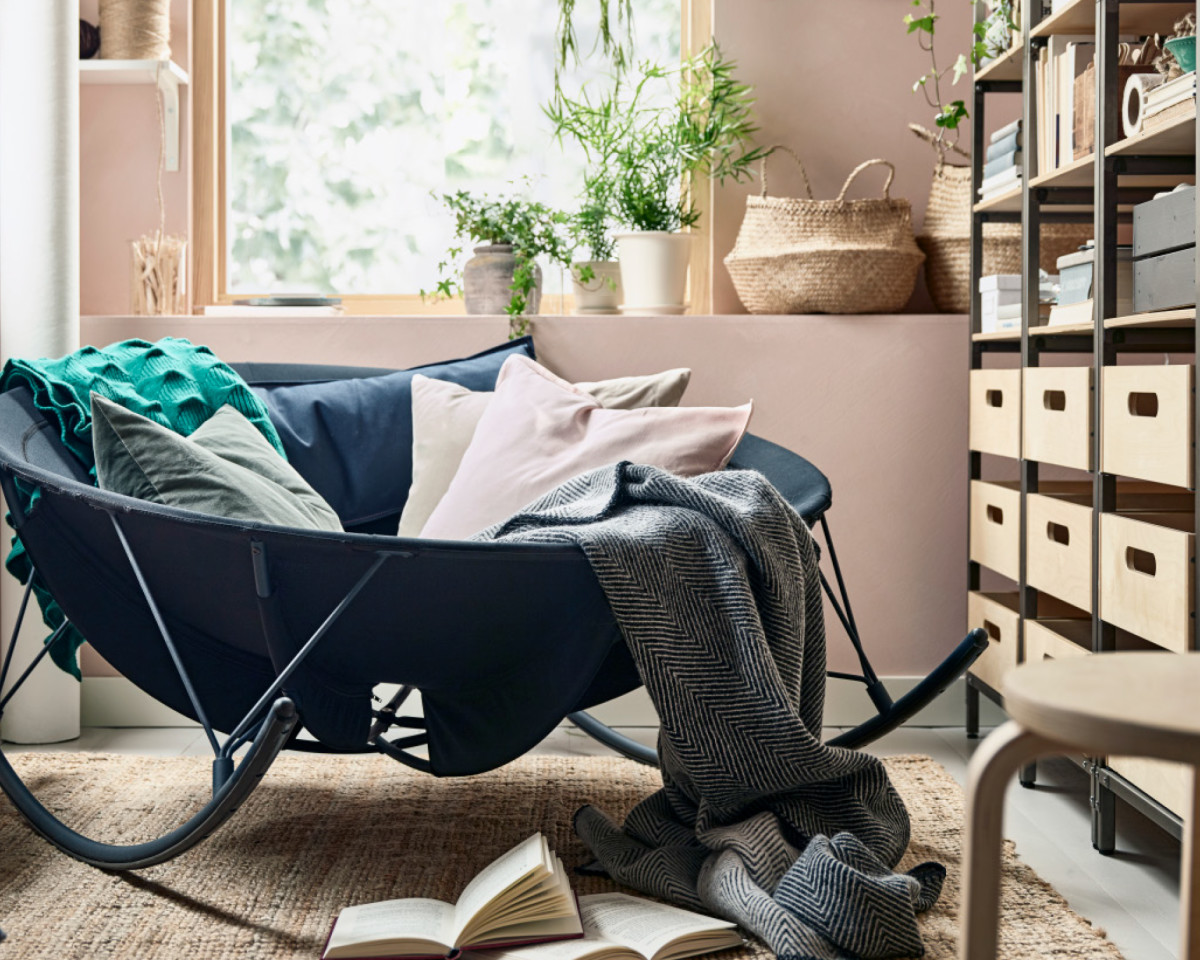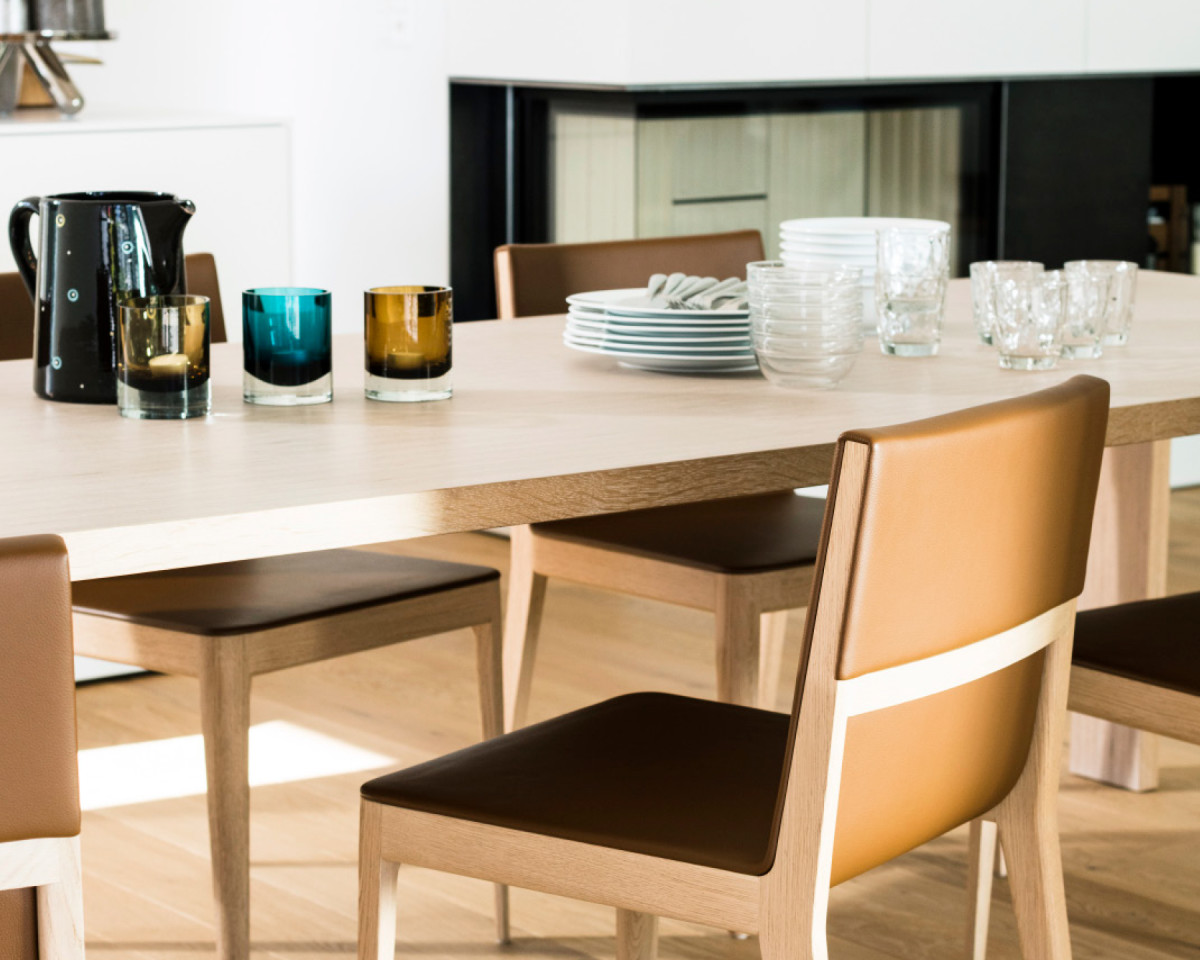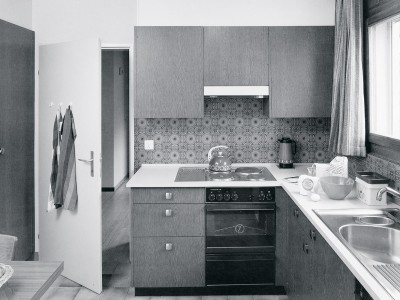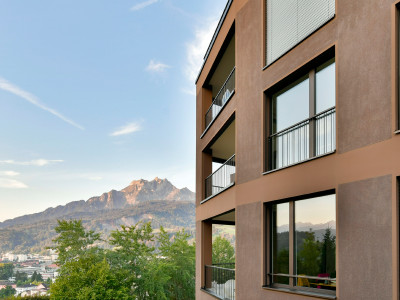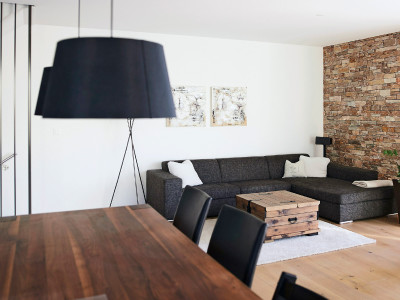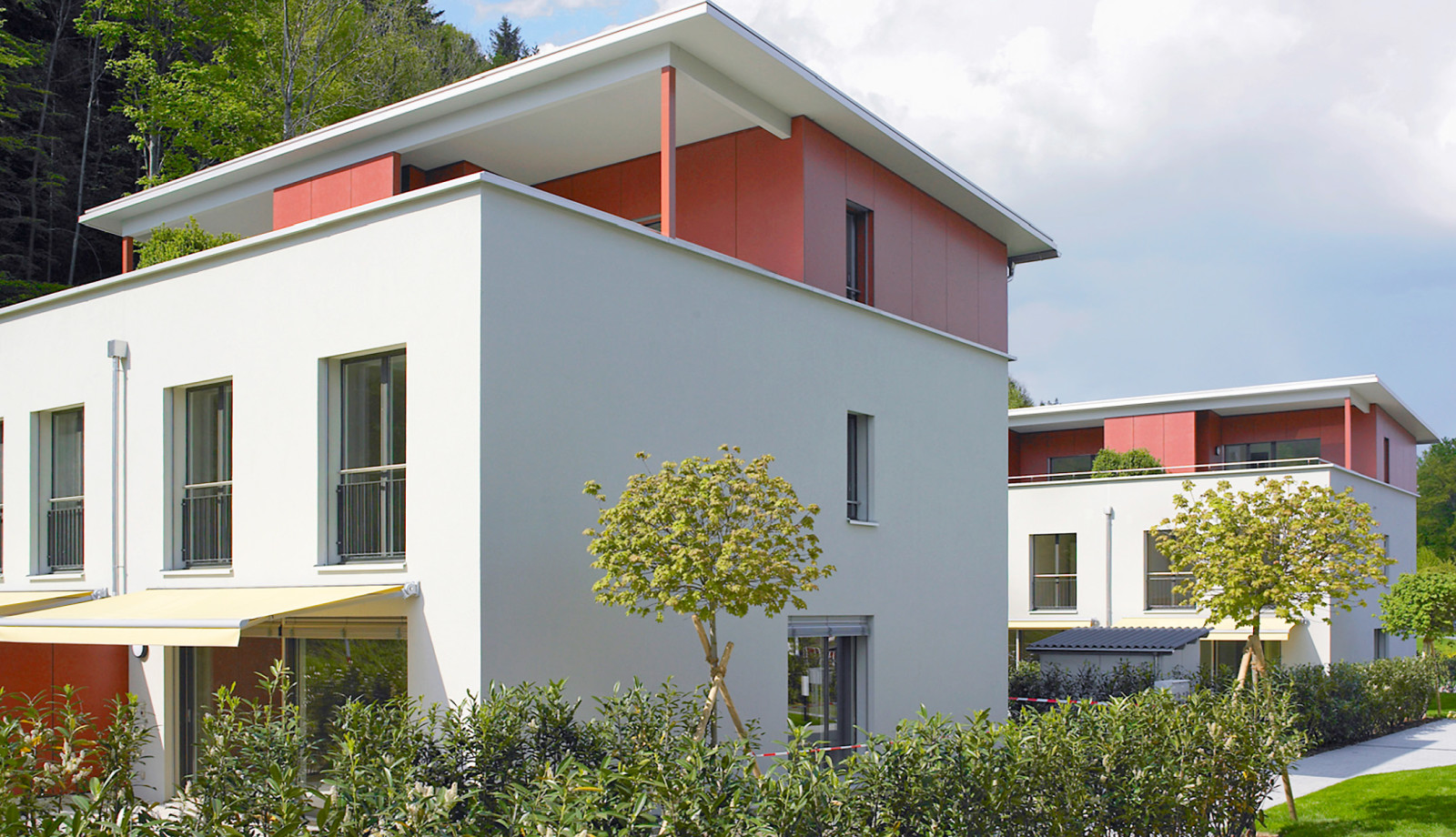
How Switzerland Lives
There’s no place like home, goes the saying. Ideally, that’s true. But what is home? How do the Swiss live? And can you even describe the typical Swiss home? Especially today, with so much in a state of flux – including with regard to family and life plans.
In Switzerland there are about 4.4 million dwellings housed in around 1.7 million buildings. Those are the hard facts, but there’s so much more to it than that. These buildings and dwellings are homes – to families, elderly couples, singletons or groups of students. And here’s where it gets more complicated, because there are as many different preferences regarding living spaces as there are different kinds of occupants. There is no one kind of bachelor pad, love nest or family house. Home is an individual matter – and still a very personal one. The question of how Mr and Mrs Switzerland live is not an easy one to answer. Nevertheless, we’ll try.
The detached house is the Swiss dream
Statistics show that the Swiss live relatively conventionally: families make up the largest share of households, at 42 per cent. Couples without children come in second place (29.1 per cent) and one-person households in third (18.5 per cent). Other living arrangements or “non-family households”, aka shared housing, are less common. We’ll therefore illustrate how Switzerland lives with the help of two “model families”. A short description of the Kellers and the Pillouds:
The Keller Family
Thomas (45), Martina (43),
Florian (10) and Elisa (7)
5-room rented apartment in Dübendorf
The Pilloud Family
Stéphane (48), Hélène (47),
Fanny (13) and Romain (11)
Owner-occupied 5-room detached house in Bassecourt
The Pilloud family’s purchase of their own home was a dream come true – a dream that a quarter of all Swiss people share, according to a current study by MoneyPark. The children can run around the house, practice their musical instruments and play in the garden to their hearts’ content. The Pilloud home was built in the late 1980s, a boom period for detached houses. It has five rooms on 152 square metres.
It may surprise you, but this family of four is in the minority with regard to homeowners. Nearly half of all detached houses are occupied by just one or two people. This has consequences. Occupants of detached homes have quite a bit of room, with the average living space per person amounting to between 50 and 59 square metres, compared to between 43 and 48 square metres in apartment buildings.
On average, Swiss men and women require 46 square metres of living space per person. This is comparable with the figures for other countries with similar standards of living, such as Germany, Sweden and France. Switzerland is slightly above the norm compared to the rest of Europe, and well above it in comparison to the rest of the world. Only a few countries have more living space per person, for example the USA, where the average person has a whopping 75 square metres.
Nearly half of all detached houses are occupied by just one or two people.
Significant regional differences
That a detached house is still the Swiss dream is shown by the fact that they make up the largest proportion of buildings for residential-use: 57 per cent across Switzerland, according to the Federal Statistical Office (FSO). But much fewer people are actually living this dream: only 28 per cent of the Swiss population live in a detached house. And there are significant regional differences: in the canton of Jura, around two thirds of all residential buildings are detached homes, which are occupied by around half of the population. On the other end of the spectrum lies the canton of Basel-Stadt, with detached houses constituting 39 per cent of all residential buildings, and occupied by just 12 per cent of the population.
Homeowning takes a lot of criticism
The trend toward detached homes continues unabated in Switzerland. According to the FSO, more than two thirds of all residential buildings built between 2000 and 2016 are detached houses. In 2018 they were the hottest type of property on the market even though detached homes come under a lot of criticism for excessive use of space, poor exploitation of limited land resources, and excessive mobility costs. As architect and urban researcher Stefan Kurath said in an interview with Swissinfo, a number of studies have shown that the detached home is the worst form of housing in terms of sustainability. Kurath therefore emphasised that, in detached housing estates too, strategies to increase density are important in order to use the available infrastructures more efficiently and to allow servicing by public transport.
Apartments are being built with more space and more luxurious fixtures. Parquet floors, washer/dryer towers and an attractive outside area are now practically standard.
The kitchen is now a well-being zone
While the Pilloud family is living the Swiss dream, Thomas and Martina Keller’s domestic situation corresponds more to the reality. The Kellers rent their home, which puts them in good company here in Switzerland. Around 2.2 million households in Switzerland – 62 per cent – are renters, as opposed to the country’s 1.4 million homeowners. The Kellers’ flat is part of an apartment building that was built in 2010. Only just under a fifth of Swiss residents live in modern buildings like this. Half live in buildings erected between 1961 and 2000, and a third live in older buildings.
The Kellers had two reasons for choosing a modern building: layout and fixtures. Both of these aspects have changed over the years. Apartments have become more spacious and their fixtures have become more luxurious, with parquet floors, washer/dryer towers and balconies. Previously neglected spaces have taken on more significance, for example the kitchen. It has evolved into the heart of many new apartments, says Andrea Mandia, art director of the home furnishings and interior design specialists Teo Jakob. “We’ve found that the kitchen is increasingly being used as a kind of well-being zone.” Small separate enclosed kitchens are no longer in vogue – today they must be open, presentable spaces. Mandia says that the bathroom has undergone a similar evolution, nowadays often tending to serve as a private spa rather than simply a washroom. Newer apartments often feature two complete bathrooms. This is a benefit which the Kellers enjoy: two bathrooms mean no long queues in the morning.
The kitchen has become the heart of many newly-built apartments.
Everything has its price
With their 130-square-metre 5-room flat, the family lives on a larger-than-average footprint for Switzerland (apartments with three or four rooms are the norm), but this size is typical for families. According to the FSO, half of all Swiss children grow up in apartments with five or more rooms. The fact that Florian and Elisa have their own rooms is almost a given in this country. 80 per cent of children enjoy this privilege.
All these benefits also come at a price. In the canton of Zurich, a 5-room flat costs 2,169 francs on average, according to the Swiss Homeowner Association. Tenants in new buildings, like the Kellers, generally pay a few hundred francs more. The canton of Zurich, together with the cantons of Zug and Schwyz, has some of the most expensive real estate in Switzerland. The average rent in Switzerland is 1,322 francs – calculated across all apartment sizes and cantons. The average household (consisting of 2.2 people with a monthly income of 10,000 francs) spends 14.7 of its income on rent and utilities.
Who goes and who stays
Both the Pillouds and the Kellers put a lot of thought into their decision about where to live. Both families appreciate their proximity to a city. They can easily commute to work, go to the cinema, dine out or go shopping. At the same time, they want to be close to nature. Having your cake and eating it, so to speak. They are therefore like the majority of Swiss (85 per cent), living in and near urban core areas. Only a small per cent, however, live in the actual city centre.
Families tend to remain in their homes for many years. Nevertheless, the desire for a change of scene is on the rise. According to the real estate website Homegate’s relocation report, just under 400,000 households moved within Switzerland between August 2016 and July 2017 – 6 per cent more than in 2014. Families tend to be more permanently settled than households without children, and most moves are confined to within urban areas.
It’s the Kellers, therefore, who are the most likely to be moving again one day. And then most likely when the children have grown up and left. The Pillouds will remain in their house. As statistics show, homeowners move less frequently than renters – even when there are changes to the family dynamic. This explains why the majority of detached houses are occupied by only one or two people.
The couple themselves often don’t move after their children move out, but for another reason – an emotional one. Because the flat or house has, over the years, become their home. A place of memories, a place where one feels at home. And there’s no place like home.
It needs to have atmosphere
The building provides the basic setting for a home. It’s only the furnishings and interior décor that then make it one, creating an atmosphere and giving it a personal note. The Swiss place great importance on elegant and tasteful home furnishings.
Andrea Mandia, you are art director of Teo Jakob, a specialist retailer for home furnishings and interior design. What are the latest trends in this area?
Today’s popular furnishings are those that create an atmosphere, a mood. Currently this primarily involves wellness and well-being.
In which room do the Swiss invest the most money?
The living room, followed by the dining room and the kitchen.
Home furnishings reflect personal taste. This can change. How often do the Swiss make changes?
Major changes happen around six times:
- Phase 1: shared housing
- Phase 2: the first flat as a singleton
- Phase 3: the first flat as a couple, which for some then becomes a family apartment
- Phase 4: the second single apartment, when the couple separates
- Phase 5: the second flat as a couple, when the children leave home and the parents downsize
Personal circumstances will of course vary, says Andrea Mandia. Many people, for example, go from their childhood bedrooms directly to Phase 3. In living rooms, dining rooms and bedrooms throughout Switzerland, you may find both high-priced design classics and inexpensive objects – often right next to each other. Those with large budgets might go for a USM modular system, Eames fibreglass chairs or a Corbusier armchair, according to Andrea Mandia.
Popular classics
Ikea’s popular classics include functional furniture like Billy bookcases and Pax wardrobes. But its PS line also sells well. “Ikea targets all those confronted with changes in their living situation,” says spokesperson Aurel Hosennen. According to the Swedish retailer’s sales figures, there are many that fit that bill: in 2018 Ikea Switzerland reported revenues of 1.1 billion francs.

